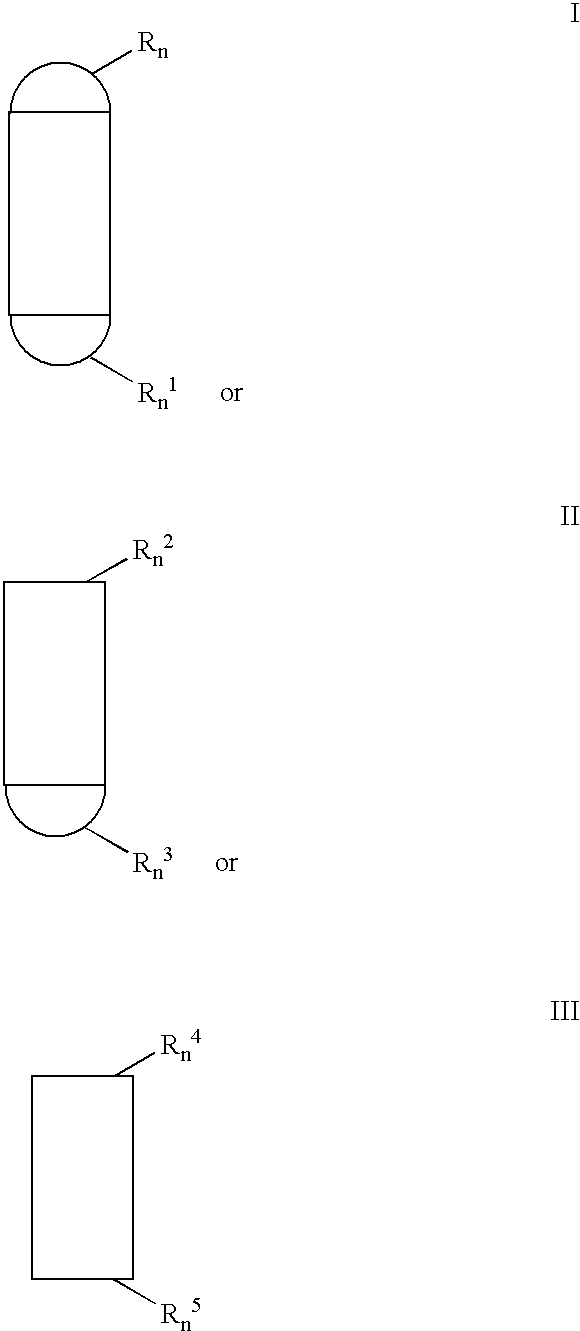Method for purification of as-produced single-wall carbon nanotubes
a carbon nanotube and single-wall technology, applied in the field of purification of as-produced single-wall carbon nanotubes, can solve the problems of difficult separation of individual carbon nanotubes from the other reaction products and purification, low nanotube yield, and significant variation in structure and size of tubes, etc., to achieve high yield
- Summary
- Abstract
- Description
- Claims
- Application Information
AI Technical Summary
Benefits of technology
Problems solved by technology
Method used
Image
Examples
example 1
Oven Laser-Vaporization
[0271] The oven laser-vaporization apparatus described in FIG. 1 and also described by Haufler et al., "Carbon Arc Generation of C.sub.60," Mat. Res. Soc. Symp. Proc., Vol. 206, p. 627 (1991) and by U.S. Pat. No. 5,300,203 was utilized. An Nd:YAG laser was used to produce a scanning laser beam controlled by a motor-driven total reflector that was focused to a 6 to 7 mm diameter spot onto a metal-graphite composite target mounted in a quartz tube. The laser beam scans across the target's surface under computer control to maintain a smooth, uniform face on the target. The laser was set to deliver a 0.532 micron wavelength pulsed beam at 300 milliJoules per pulse. The pulse rate was 10 hertz and the pulse duration was 10 nanoseconds (ns).
[0272] The target was supported by graphite poles in a 1-inch quartz tube initially evacuated to 10 m Torr. and then filled with 500 Torr. argon flowing at 50 standard cubic centimeters per second (sccm). Given the diameter of th...
example 2
Laser-Vaporization to Produce Longer Single-Wall Carbon Nanotubes
[0280] In this example, a laser vaporization apparatus similar to that described by FIG. 1 was used to produce longer single-wall carbon nanotubes. The laser vaporization apparatus was modified to include a tungsten wire strung across the diameter of a quartz tube mounted in an oven. The tungsten wire was placed downstream of the target so that the wire was 1 to 3 cm downstream from the downstream side of the target (13 to 15 cm downstream from the surface of the target being vaporized). Argon at 500 Torr. was passed through the quartz tube at a flow rate equivalent to a linear velocity in the quartz tube of about 1 cm / sec. The oven was maintained at 1200.degree. C. and Group VIII transition metals were combined at 1 to 3 atom % with carbon to make the target.
[0281] The pulsed laser was operated as in Example 1 for 10 to 20 minutes. Eventually, a tear drop shaped deposit formed on the tungsten wire, with portions growi...
example 3
Two Laser Vaporization
[0282] Graphite rods were prepared as described in Example 1 using graphite, graphite cement and 1.2 atom % of a mixture of 50 atom % cobalt powder and 50 atom % nickel powder. The graphite rods were pressed into shape and then formed into targets as described in Example 1. The graphite rods were then installed as targets in an apparatus as diagramed in FIG. 2, except tungsten wire 32 was not used. A quartz tube holding the graphite rod targets was placed in an oven heated to 1200.degree. C. Argon gas which had been catalytically purified to remove water vapor and oxygen was passed through the quartz tube at a pressure of about 500 Torr and a flow rate of about 50 sccm although flow rates in the range of about 1 to 500 sccm (standard cubic centimeters per minute), preferably 10 to 100 sccm are also useful for a 1 inch diameter flow tube. The first laser was set to deliver a 0.532 micron wavelength pulsed beam at 250 mJ per pulse. The pulse rate was 10 Hz and th...
PUM
| Property | Measurement | Unit |
|---|---|---|
| lengths | aaaaa | aaaaa |
| lengths | aaaaa | aaaaa |
| lengths | aaaaa | aaaaa |
Abstract
Description
Claims
Application Information
 Login to View More
Login to View More - R&D
- Intellectual Property
- Life Sciences
- Materials
- Tech Scout
- Unparalleled Data Quality
- Higher Quality Content
- 60% Fewer Hallucinations
Browse by: Latest US Patents, China's latest patents, Technical Efficacy Thesaurus, Application Domain, Technology Topic, Popular Technical Reports.
© 2025 PatSnap. All rights reserved.Legal|Privacy policy|Modern Slavery Act Transparency Statement|Sitemap|About US| Contact US: help@patsnap.com



